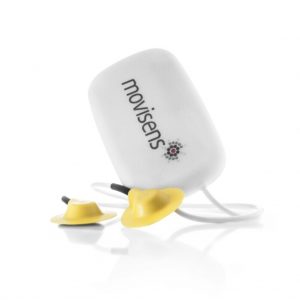New sensor EdaMove 3 now available

movisens is now also on twitter! Follow us to be always up to date

Our very own Florian Richert crafted a fascinating white paper about the difficulties of accurately assessing energy expenditure using actigraphy. He details the history of interpreting accelerometer data, highlighting the advantages of a transparent method of calculation and the importance of capturing raw data in the sensor. Focusing on the quest to accurately estimate energy expenditure, Florian delves in to the existing research and reveals the weaknesses in the current approach and the way forward to develop a sustainable method of calculating parameters from accelerometer data as newer and better algorithms are devised.
The paper carves through the different existing methodologies and presents solid recommendations for integrating high quality accelerometer data in future research. In particular, utilising physiological data to assist in capturing psychological data in an ambulatory setting.
We hope you enjoy it.
Click here to download
Previously discovering any relationships between physiological and subjective data would require cross referencing the information after the study. What if we said you can now detect heart rate and have it trigger a form? Or even psychological stress? Or you’d like to track Activity Levels? We’ve got you covered with that and more…
To learn how sensor triggering can unlock greater insights in your research visit our stand at the following conferences:
We've just added a few white papers to our website that we thought you may find interesting.
First is a validation paper on the energy expenditure calculation of the Move II (now superceded by the Move 3). Some manufacturers are still utilising basic linear regression models to calculate the energy expeniture in their activity sensors. This paper demonstrates the advantages of utilising an activity class based algorithm vs. a basic linear regression to obtain a more accurate estimation of energy expenditure. It's somewhat old news, but it's good to remind everyone occasionaly of the superiority of our activity based method over the basic linear regression model.
White Paper Move II Validation Energy Expenditure
Secondly we have a validation of the R-peak detection capabilities of the EkgMove (now superceded by the EcgMove 3). This paper puts the EkgMove through it's paces by introducing movement artefacts and validating the detection capabilities in reference to the Somnoscreen plus.
White Paper Validity of R-Peak Detection
The measurement of arousal using Electro Dermal Activity (Galvanic Skin Response) is often hindered by factors like movement, temperature and exercise. This paper highlights the benefits of capturing activity data in addition to EDA/GSR. It details a method that can isolate the emotional arousal component of EDA/GSR using our EdaMove sensor.

Capable of recording ambient light, 3D acceleration, temperature, and barometric air pressure data for up to two months, our sensor is ideal for research into the effect of light exposure and physical activity in the fields of:
For a personal demonstration of the LightMove3 visit our stand at the following conferences:
Die Erfassung körperlicher Aktivität kann auf relativ einfache und praktikable Art anhand von Akzelerometern erfolgen. Auf der Grundlage erfasster Beschleunigungswerte kann durch spezielle Algorithmen der Energieumsatz errechnet werden. Um die Messgenauigkeit des kmsMove zu überprüfen, wurden zwei unterschiedliche Validierungsstudien vom Sportinstitut des KIT in Kooperation mit hiper.campus durchgeführt.
Energieumsatzmessung mit Aktivitätssensoren – Validität des kms Move
Im Rahmen einer Kooperationsstudie zwischen hiper.campus und dem Sportinstitut des KIT wurde der Aktivitätssensor der movisens GmbH mittels spirometrischen Messungen validiert.
Die Analyse der Daten zeigt, dass die Intra-Klassen-Korrelation zwischen dem Aktivitätssensor und der indirekten Kalorimetrie bei einer Messdauer von 100 Minuten 0.82 (0.38–0.96; p = 0.003) beträgt und bei einer Messdauer von 7 Stunden im Durchschnitt 0.81 (0.22–0.97; p = 0.01). Die Ergebnisse bestätigen, dass der movisens Aktivitätssensor mit hoher Genauigkeit den Energieumsatz bei Reha- Patienten bestimmt und ein ideales Gerät zur Ermittlung und Analyse alltäglicher Bewegungen darstellt.
Estimation of energy expenditure using accelerometers and activity-based energy models - validation of a new device